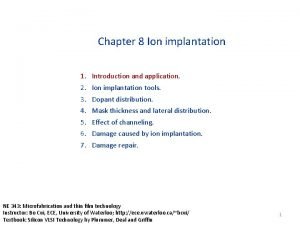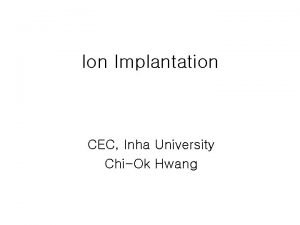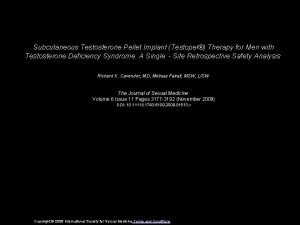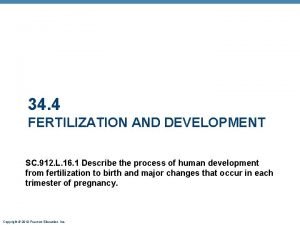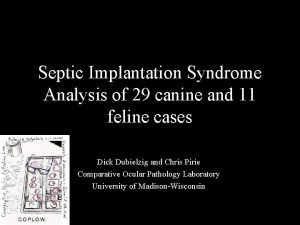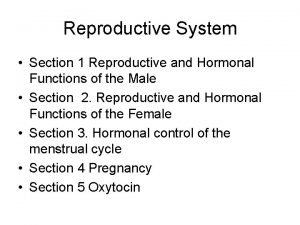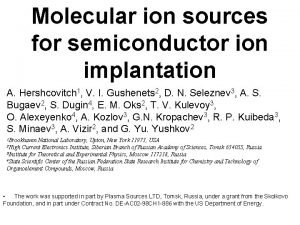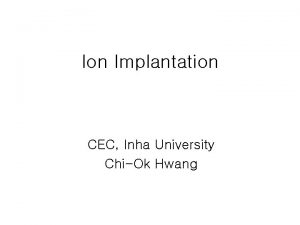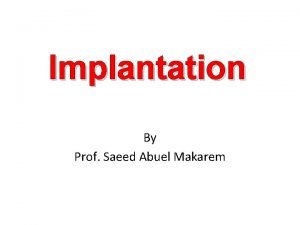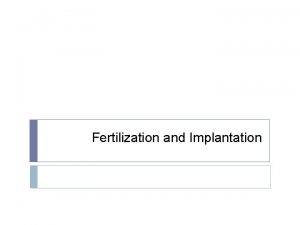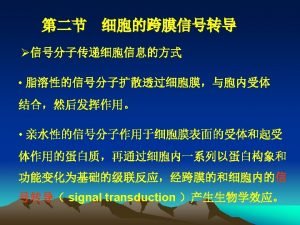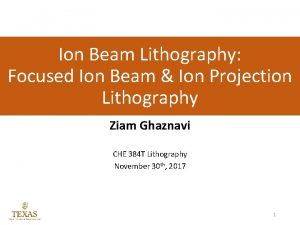ION IMPLANTATION Ion Implantation Process What is Ion










- Slides: 10

ION IMPLANTATION

Ion Implantation Process What is Ion Implantation? A suitable positive ion is accelerated and when it impinges on silicon, it penetrates the silicon depending on its kinetic energy and stops at a position depending on its energy. This dopes the silicon if the implanted ion is P+, As+, B+ or similar ion. Limitations of Diffusion: • Light doping concentration is difficult. o Control of (+/-5 to 10%) at high concentration and worsen at low concentrations. o Requirement of high temperature

Ion Implantation Equipment

Ion Implantation Process Ion are accelerated to a certain kinetic energy by passing them through an accelerator and when they impinge on silicon surface, several phenomena can happen: Ion can • Bounce off the surface • Sputter Si from surface • Penetrate into silicon and get scattered and then stop inside silicon Rp = Range= average distance travelled by the ion before stopping ΔRp = spatial spread in the ion distribution = straggle = sigma (or std. deviation)

Ion Implantation Process Advantages of Ion Implantation: Controlled doping – low and high possible – 1011/cm 2 to 1017/cm 2 - control upto (+/-1%) Dose and depth can be independently controlled Depth of penetration can be controlled by controlling energy of the ion beam • Reactive ions like O, N & C can be implanted • Same machine can implant different ions • Low temperature process Disadvantages of Ion Implantation: • Damaged surface is created. • Costly machine for ion implantation

Ion trajectory

Channelling What is channelling? Ions can move faster along certain crystallographic directions and if they are incident along that direction, the range will be longer than expected. This phenomenon is known as channelling of ions. This can also give a tail in the profile since ions get scattered along different directions near Rp.

Channeling

Implantation Damage Displacement of lattice atoms Vacancy interstitial pair - anneal at 100 k Divacancies- Incident Ions displaces adjacent atoms – anneal at 550 -600 k Amorphization – For high enough doses the crystal becomes amorphous. At this point the lattice atoms arrangement becomes random

Implantation Anneal Post Implant anneal is carried out at 600900ºC to remove implantation damage. This causes Restores atoms to the lattice site • Recrystallization of the amorphous region, if any
